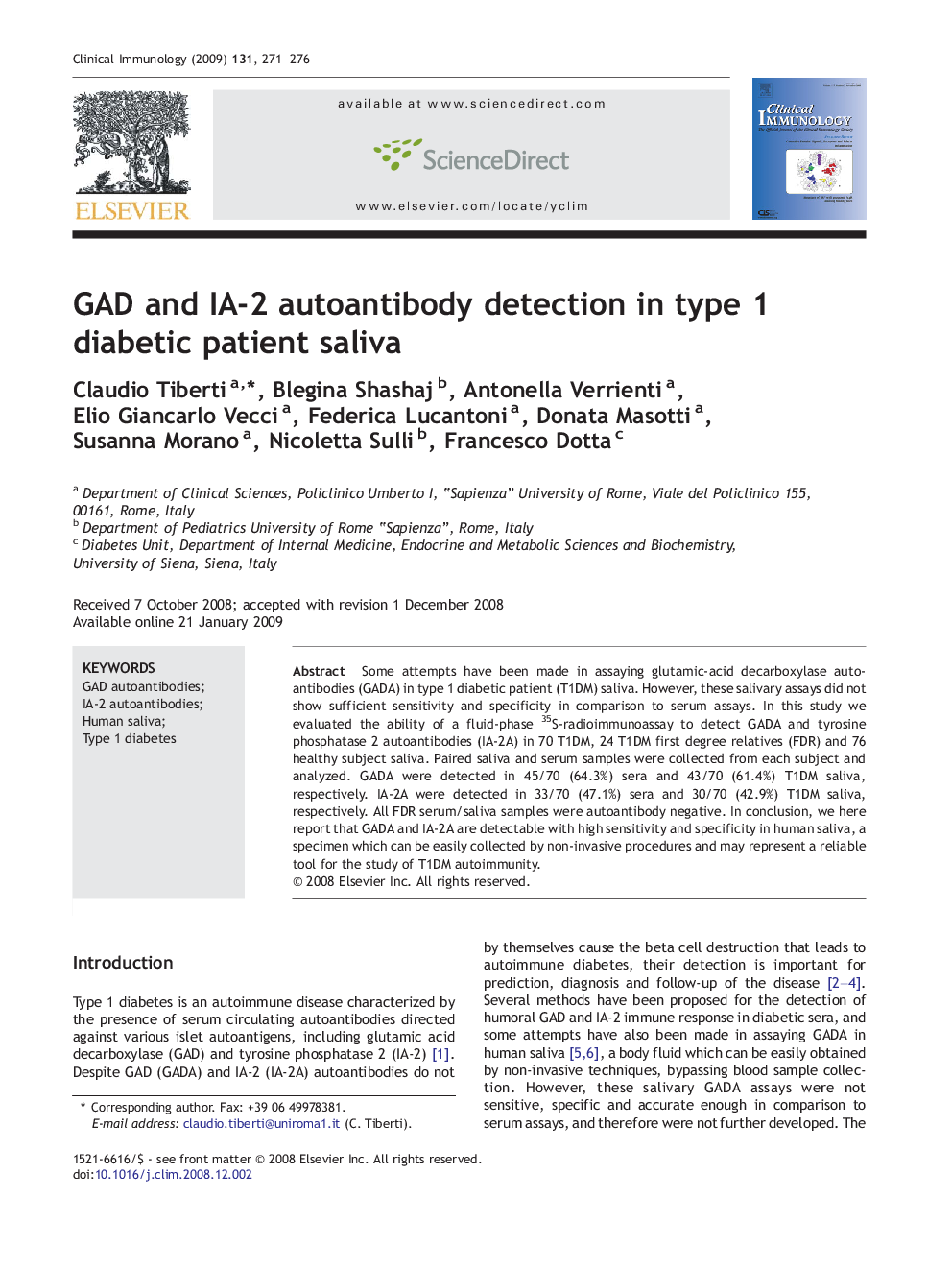| Article ID | Journal | Published Year | Pages | File Type |
|---|---|---|---|---|
| 3257874 | Clinical Immunology | 2009 | 6 Pages |
Some attempts have been made in assaying glutamic-acid decarboxylase autoantibodies (GADA) in type 1 diabetic patient (T1DM) saliva. However, these salivary assays did not show sufficient sensitivity and specificity in comparison to serum assays. In this study we evaluated the ability of a fluid-phase 35S-radioimmunoassay to detect GADA and tyrosine phosphatase 2 autoantibodies (IA-2A) in 70 T1DM, 24 T1DM first degree relatives (FDR) and 76 healthy subject saliva. Paired saliva and serum samples were collected from each subject and analyzed. GADA were detected in 45/70 (64.3%) sera and 43/70 (61.4%) T1DM saliva, respectively. IA-2A were detected in 33/70 (47.1%) sera and 30/70 (42.9%) T1DM saliva, respectively. All FDR serum/saliva samples were autoantibody negative. In conclusion, we here report that GADA and IA-2A are detectable with high sensitivity and specificity in human saliva, a specimen which can be easily collected by non-invasive procedures and may represent a reliable tool for the study of T1DM autoimmunity.
